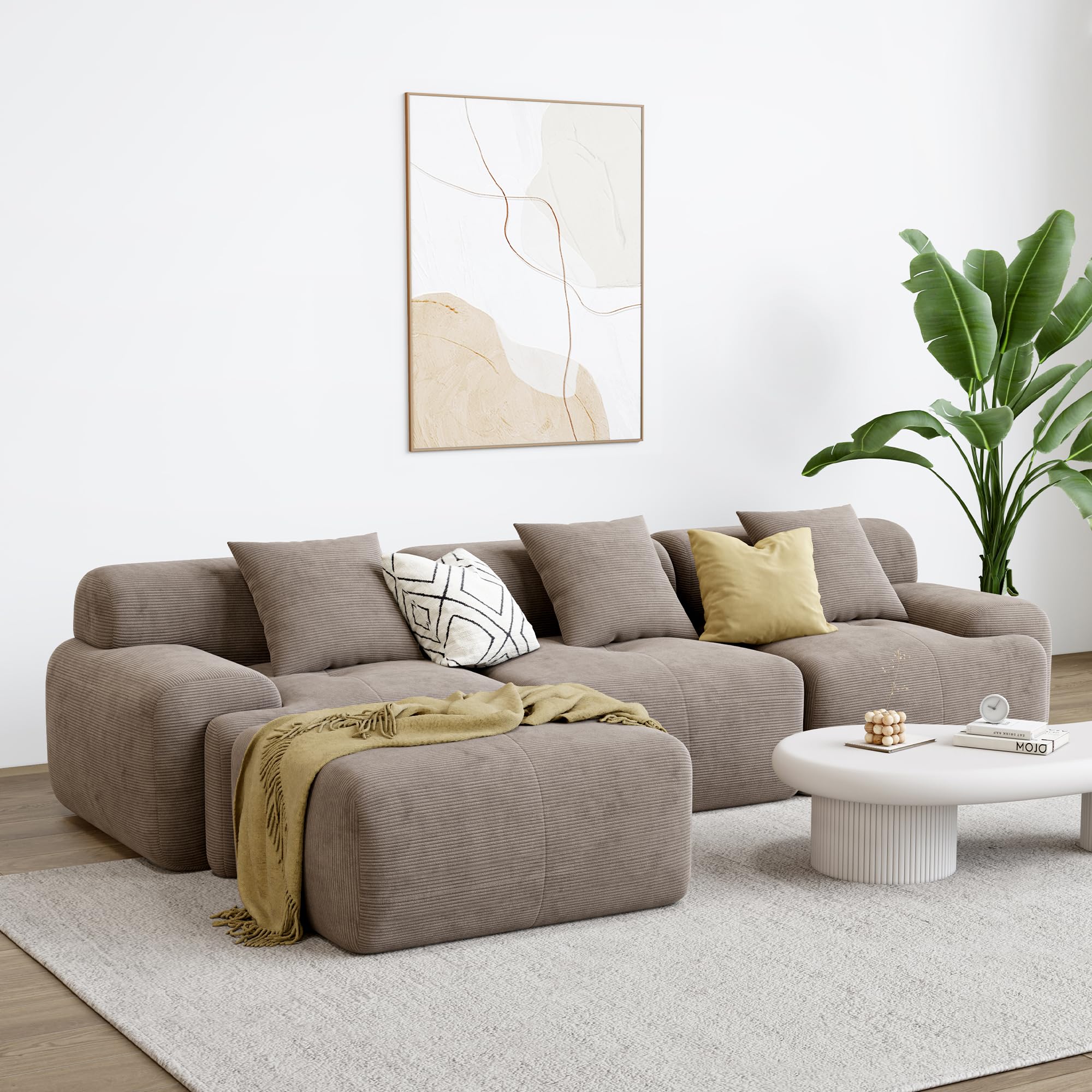 LIKIMIO 118⁘ Modern L-Shaped Modular Sectional Sofa for Living Room, Corduroy Upholstery, Oversized 3-Seater Couch with De.... — LIKIMIO 118⁘ Modern L-Shaped Modular Sectional Sofa for Living Room, Corduroy Upholstery, Oversized 3-Seater Couch with De — :::
LIKIMIO 118⁘ Modern L-Shaped Modular Sectional Sofa for Living Room, Corduroy Upholstery, Oversized 3-Seater Couch with De.... — LIKIMIO 118⁘ Modern L-Shaped Modular Sectional Sofa for Living Room, Corduroy Upholstery, Oversized 3-Seater Couch with De — :::Find out more.
We secrete it, wall by wall, and then furnish its interior with the geology of our lives: the hard table, the yielding chair, the lamp like a captured sun. We move through these self-made caverns, our paths dictated by the placement of immovable objects. A traditional sofa is a kind of monolith, a declaration of permanence. You place it, and there it sits, a silent, upholstered tyrant demanding that life arrange itself around its bulk. It is a statement of intent: here I will sit, here we will gather, for the foreseeable future. The decision feels final, like a tombstone.
But what of the life that refuses to be fixed? The one that expands and contracts, that requires solitude one day and a crowd the next. The static room becomes a cage for this fluid existence. The furniture, meant to provide comfort, instead provides constraint. We pace its perimeters. We are creatures who molt, shedding old skins and old habits, yet our domestic shells are often built of stone, unchangeable. The desire to shift a wall, to split a sofa in two, is the desire for a life less fated, one with options written into its very floor plan. This is the quiet rebellion of rearranging the furniture.
A Lexicon of Parts
The idea of furniture as a system of components, rather than a collection of immutable wholes, emerged from a peculiar mid-century blend of architectural theory and post-war pragmatism. It was a new grammar for living. Instead of purchasing a single, declarative sentence—a credenza, a settee—one could acquire the alphabet and write one's own story. George Nelson's "Storage Wall" for Herman Miller in 1944 was an early articulation of this language, a response to shrinking urban apartments that demanded every inch be functional. It was not merely a shelf, but a floor-to-ceiling vocabulary of cabinets, desks, and drawers. Later, the designer Harvey Probber gave the concept its name, "modular," with his slinging, biomorphic seating from the 1940s that could cluster, snake, and separate like cultured cells. The pieces spoke to each other, but they did not demand to be locked together forever.
* The modular principle treats furniture as a set of building blocks, allowing the user to become the architect of their immediate space.
* Its philosophical origins lie in movements like De Stijl, which reduced objects to their essential geometric components and relationships.
* This approach caters to the unpredictability of modern life, where a living room might need to be a workspace, a cinema, or a dining hall, all in the same week.
* The psychological draw is the granting of agency; the ability to physically manifest a change in circumstance by reconfiguring one's environment.
The Freedom of the Grid
There is a subtle confusion embedded in this freedom. Is the ability to reconfigure a pre-determined set of blocks true creative expression, or is it merely the illusion of choice within a closed system? The manufacturer provides the grid, the dimensions, the connection points. You can build whatever you want, as long as it is made of their parts, in their colours, in their textures. The system offers flexibility, but on its own terms. It is a paradox of constrained liberty. You are not felling a tree to hew your own table; you are clicking together pieces from a box.
This does not diminish its appeal. The appeal lies in the act of assembly itself, the feeling of control over one's small corner of the world. It mirrors a larger human impulse: to bring order to chaos, to construct a habitable logic from a jumble of parts. A modular sofa is not just a place to sit; it is a recurring solution to the problem of how to live. It is a quiet testament to the belief that with a bit of effort, the room—and perhaps the life lived within it—can always be improved, reconfigured, and made new again, one section at a time.
Get It On Amazon ::: (brought to you by Kiitn)
▷ Find out more.
LIKIMIO 118" Modern L-Shaped Modular Sectional Sofa for Living Room, Corduroy Upholstery, Oversized 3-Seater Couch with Deep Seat and Movable Ottoman – No Assembly Price, $512.99 $ 512 . 99 - $599.99 $ 599 . 99 See options
#Ad Our articles include affiliate links: If you buy something through a link, we may earn a commission 💕
[ Purchase Options ]

No comments:
Post a Comment